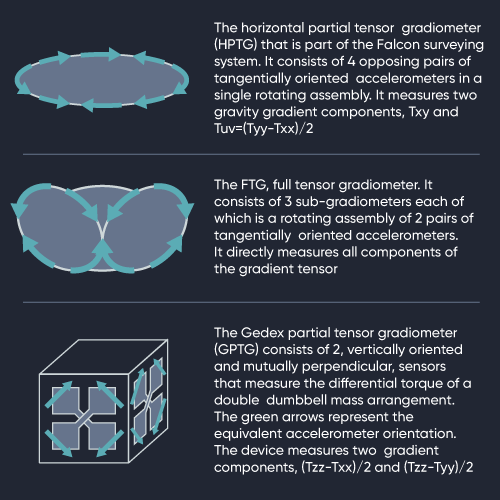
Summary
Differing gravity meter designs exist; two gravity gradiometer designs are currently available for commercial survey operations and other instruments are in the late stages of pre-deployment research. These gradiometer systems differ from one another with respect to the number and orientation of sensing accelerometer pairs. There is a need for a theoretical framework to evaluate how these design variations affect the expected performance of these devices.
Three analytical methods of design comparison are presented in the paper:
1) Transformation of noise, a calculation of the degree of noise reduction produced by the method of transforming and combining measured gradient components
2) Inversion errors, comparison of the degree to which noise induces errors in the values of parameters determined in a parametric inversion calculation
3) Sensitivity or source detection, analysis of the response of each system to a point source and how that source varies as a function of location in 3D space
Each method focuses on a different aspect of gravity gradiometry
These quantify the degree to which noise in the raw outputs affects the utility of a gradiometer and the acquired data.
Three gradiometer designs were analysed by these methods. Two gravity gradiometer designs manufactured by Lockheed-Martin:
- the full tensor gradiometer (FTG) and
- the horizontal partial tensor gradiometer that is part of the Falcon survey system
- The two component gradiometer currently being development by Gedex Inc
All three analytical methods produce similar quantitative results, indicating that in order for the gradiometer designs to yield equivalent results the noise level of the horizontal partial tensor gradiometer must be less than that of each of the three sub-gradiometers of the FTG by a factor of just over 3.
Key Takeaways
- The analyses presented quantify the advantage that the FTG design has over the other two designs resulting from the number and orientations of the sensors
- The FTG design outperforms the other designs

